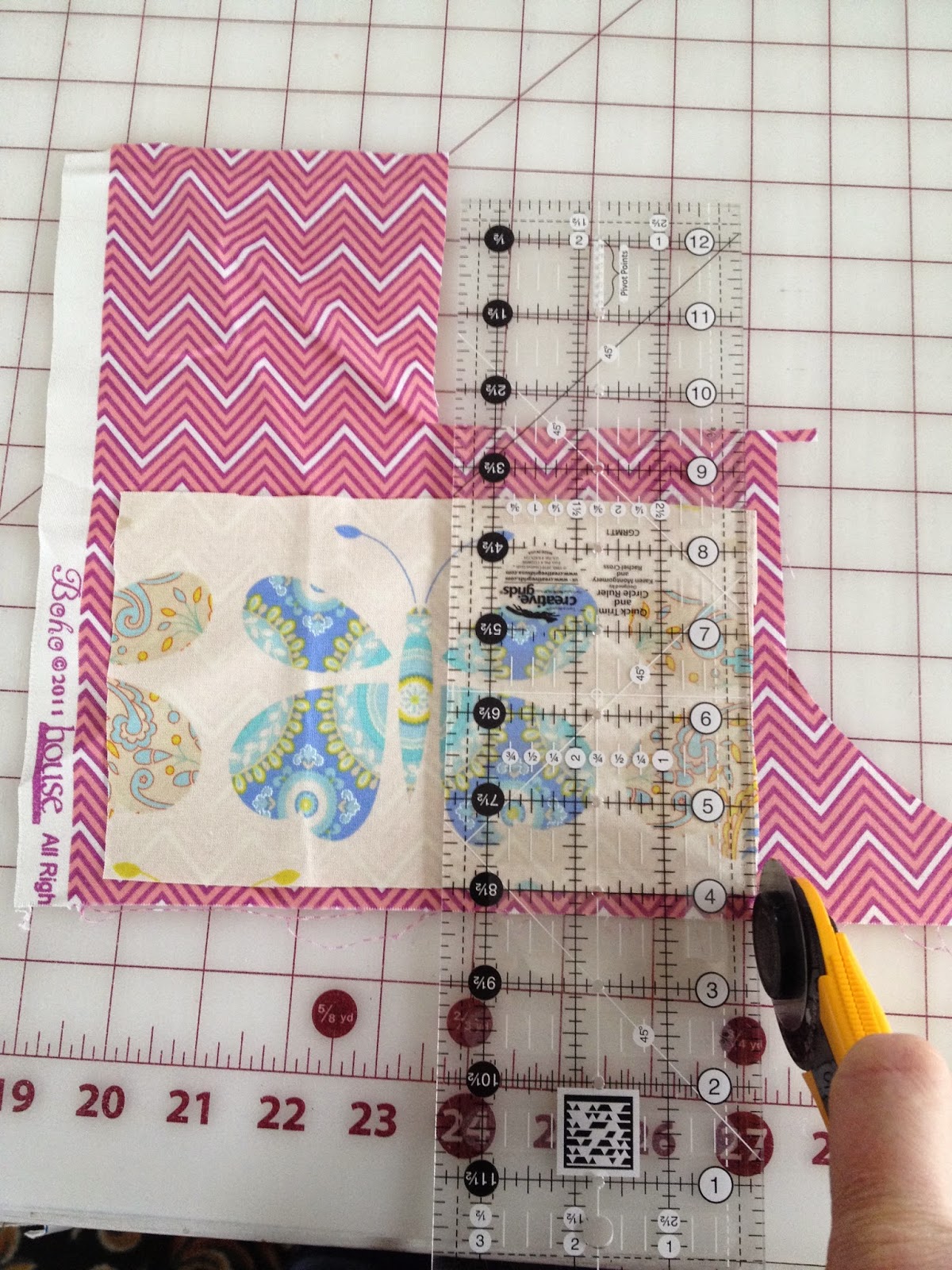My biggest challenge in binding a quilt was to have it fold over easily and keep the binding edge looking sharp and straight. I thought I would share how I like to bind a quilt. Not saying it's the best way just the way that works best for me.
I always use a french fold binding, which means that I simply fold the 2 1/2" wide strip in half with raw edges meeting and press. This will gives me 2 layers of fabric over my quilt edge and is a heck of a lot easier and faster, in my opinion, to fold it in half rather than use a bias tape maker or try to fold without a bias tape maker.
If I can I will machine stitch on instead of handsewing. Usually by the binding stage I'm ready to be done with a quilt and want to get it over with. But when I do decide to handstitch I end up finding a mental place and just enjoy the process.
So here is my quilt with the binding already sewn on. I'm machine sewing this binding on so I first attached it to the back of the quilt. There's a ton of tutorials and instructions out there leading up to this process so I won't bore you with that. But I will say I always join my strips together on the diagonal and I do not use bias binding unless something has a curved edge.
Next and here's my "big trick"! Get ready....
I press the binding away from the quilt. A good steamy press and it always lays flat. Now I use cotton batting so I'm not sure how too much steam or heat would affect a poly batting but I'll let you be the judge.
Once I've pressed it away from the quilt all the way around then I flip the quilt over and fold the binding over just as it will be sewn onto the quilt and press again. This is definitely a pressing step vs. an ironing step and your fingers might get a little toasty but I get a rhythm and I can usually do it without burning too bad.
I pay special attention to the corners and get them to miter as perfectly as possible so I don't have to fiddle with it later.
Very often I do not even have to pin or clip the binding down to sew although when I do I end up taking the time to do it I am usually glad I did especially when I am handsewing.
This binding method usually takes me under and hour to complete if I am machine sewing. I like how it takes away the wonkyness that I used to get before I pressed.
I always use a french fold binding, which means that I simply fold the 2 1/2" wide strip in half with raw edges meeting and press. This will gives me 2 layers of fabric over my quilt edge and is a heck of a lot easier and faster, in my opinion, to fold it in half rather than use a bias tape maker or try to fold without a bias tape maker.
If I can I will machine stitch on instead of handsewing. Usually by the binding stage I'm ready to be done with a quilt and want to get it over with. But when I do decide to handstitch I end up finding a mental place and just enjoy the process.
So here is my quilt with the binding already sewn on. I'm machine sewing this binding on so I first attached it to the back of the quilt. There's a ton of tutorials and instructions out there leading up to this process so I won't bore you with that. But I will say I always join my strips together on the diagonal and I do not use bias binding unless something has a curved edge.
Next and here's my "big trick"! Get ready....
I press the binding away from the quilt. A good steamy press and it always lays flat. Now I use cotton batting so I'm not sure how too much steam or heat would affect a poly batting but I'll let you be the judge.
Once I've pressed it away from the quilt all the way around then I flip the quilt over and fold the binding over just as it will be sewn onto the quilt and press again. This is definitely a pressing step vs. an ironing step and your fingers might get a little toasty but I get a rhythm and I can usually do it without burning too bad.
I pay special attention to the corners and get them to miter as perfectly as possible so I don't have to fiddle with it later.
Very often I do not even have to pin or clip the binding down to sew although when I do I end up taking the time to do it I am usually glad I did especially when I am handsewing.
This binding method usually takes me under and hour to complete if I am machine sewing. I like how it takes away the wonkyness that I used to get before I pressed.
































